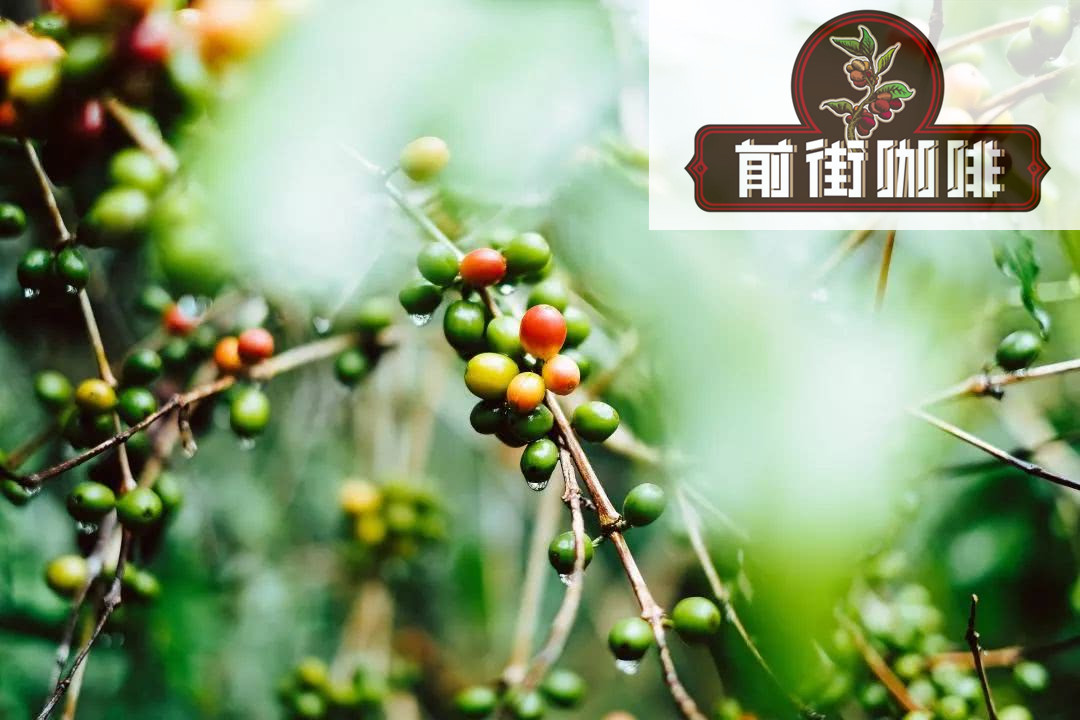What are the environmental and climatic requirements of coffee trees? What are the types of coffee trees?

Professional coffee knowledge exchange more coffee bean information please follow the coffee workshop (Wechat official account cafe_style)
What is a coffee tree?
Coffee tree is a shrub or small tree of Rubiaceae; leaves are opposite, leathery, long ovate; every March, the branches will appear white flowers, petals spirally arranged, the heart of the flowers jump around the petals, take a closer look, it is really like a small windmill playing in childhood, emitting the fragrance of jasmine flowers; the fruit is oval, berry, crimson, containing two seeds, that is, we are familiar with coffee beans. The first flowering period of the white flower red fruit coffee tree is about three years old. the five-petal tube-shaped white flowers are filled with a faint fragrance of jasmine and the inflorescences are arranged in dense clusters.
Flowers wither after two or three days of blooming and begin to bear fruit after a few months. The fruit is a drupe with a diameter of about 1.5cm. It turns green at first, then turns yellow gradually, and turns red when ripe. It is very similar to cherries, so it is called cherry coffee (Coffee Cherry). It can be harvested at this time.

What are the growth environment requirements of coffee trees?
Coffee trees like mild temperatures during the day and less than two hours of direct sunshine
So if there is a lack of afternoon showers or fog to check in every day, local farmers will have to plant many taller trees in the coffee garden for shade. At night, they want an environment of about ten degrees Celsius but not too low, because too warm will make the coffee berries grow too fast to produce small, strong, hard and high-quality coffee beans; in case it is too cold to frost, the coffee trees will freeze to death.
Based on these characteristics, the promised land suitable for Arabica coffee is mostly located in countries with alpine terrain between the Tropic of Cancer and the Tropic of Cancer, which is also known as the coffee belt.
The ideal planting conditions for coffee trees are as follows: the temperature is between 15 ℃ and 25 mm, and the annual rainfall must reach 1500 mm, and the rainfall time should be in line with the flowering cycle of coffee trees. Of course, in addition to the seasonal rainfall, there should also be fertile soil and good drainage. Fertile soil containing volcanic ash, in addition, although sunlight is an indispensable element for the growth and fruit of coffee, too strong sunlight will inhibit the growth of coffee trees, so various producing areas usually cooperate with the planting of some shade trees. As for the ideal altitude, the altitude is 500 Muhami 2000 meters.
Types of coffee trees
1 Arabica species Coffea Arabica
The shape of the bean is small, the front is long oval, the middle crack is narrow and tortuous, and the arc on the back of the bean is flat.
Iron pickup (Typica):
All Arabica, the oldest native variety in Ethiopia, are derived from Tibica. The top leaf of Tiebika is bronzed and the bean body is oval or thin in shape; the flavor is elegant, but the physique is weak, the disease resistance is poor and the fruit yield is less.
Bourbon:
After the early (prehistoric coffee) Tibika was transplanted to Yemen, the bean shape changed from thin and pointed to round body.
2 Robusta species Coffea Robusta Linden
The bean shape is larger, the front is gradually round, the back is round and convex, and the crack is straight.
3 Liberian species coffea liberica
The Liberian species, the large-grained species, is native to Liberia in Africa, as well as a few countries such as Malaysia.
4 Ethel sa species Coffea excelsa
Ethel sa is a variety discovered in 1904, which is native to the Charlie River Basin in Africa, with small fruit and high yield per plant, especially a drought-resistant variety. The product has a strong flavor, slightly bitter taste and less cultivation.
For more professional coffee exchanges, please scan the code and follow Wechat: qiannjie

Please indicate the source of the reprint.
Important Notice :
前街咖啡 FrontStreet Coffee has moved to new addredd:
FrontStreet Coffee Address: 315,Donghua East Road,GuangZhou
Tel:020 38364473
- Prev

Travel must hang earbag! How can I cook it better? What are the points for attention?
Professional coffee knowledge exchange more coffee bean information please follow the coffee workshop (Wechat official account cafe_style travel must-have earbag! How can I cook it better? What are the points for attention? Hanging earbag is the legendary essential product for home travel to work and work, which can not only satisfy the daily caffeine intake, but also satisfy the self-brewing coffee in various environments.
- Next

Where can I plant coffee trees in China? Can I plant potted coffee trees at home? How do you plant it?
For more information on coffee beans, please follow the coffee workshop (official Wechat account cafe_style). Coffee trees have long been planted in Yunnan, China. The earliest coffee recorded in history is the planting of China's first coffee tree in Taiwan in 1884. In the tenth year of Guang Xu of the Qing Dynasty (AD 1884), a British tea merchant found that the climate of Taiwan was very similar to that of Central and South America.
Related
- How did the Salvadoran coffee industry develop in Central America?
- What exactly does the golden cup extraction of coffee mean?
- The Origin of Coffee flower
- [2023 Starbucks World Earth Day] there are more meaningful things besides free Starbucks coffee!
- What kind of coffee is there in Spain? 9 Flavors of Spanish Coffee
- Aromatic African coffee| Kenya's coffee culture and historical production area
- Liberica Coffee Bean knowledge: the characteristics of Liberian Coffee beans of the three original species of Coffee beans
- The origin and formula of Spanish latte introduces the taste characteristics of Bombon coffee in Valencia, Spain.
- How to adjust the solution of over-extracted coffee
- What is the tasting period of coffee beans? What is the period of coffee and beans? How should coffee wake up and raise beans?

